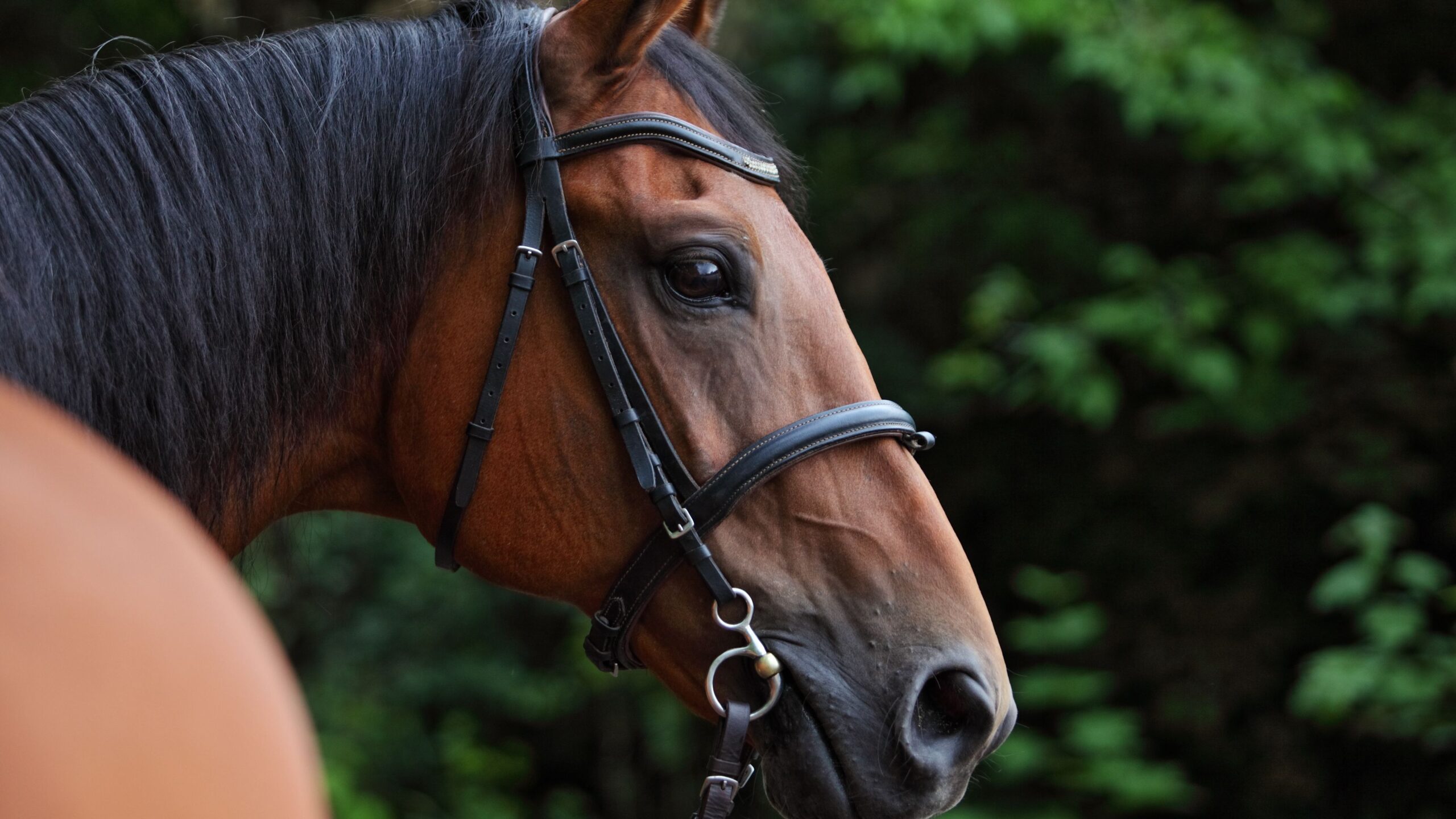Bridles, with bits and without, have been used through history as various cultures sought to guide, control and communicate with the horse.
by Mary Ann Simonds, B.S., M.A, Originally published in Holistic Horse magazine
The history of bridles and bits goes as far back as 3500-3000 BC. Early bits were made of bone, horn or hard wood before metal was mastered. The type of bridles and bits give insight into the cultural philosophy and views held toward the horse, from metal bits with large spiked spades designed to inflict pain to nothing more than a piece of leather or rope tied around a horse’s neck, nose or mouth.
kt
A number of studies show the main reason people have horses is because they are interested in an interactive social relationship between horse and human. With modern disciplines touting the best training devices for particular sports, it is odd that the focus has not been more on asking, “What is the best way to communicate with my horse?”
Instead, a many trainers have developed bits to get a horse to do a particular move for their discipline. Racehorses are trained to “pull” on a bit so they stretch their necks out to “win by a nose,” while dressage horses are trained to understand various pressures and movement of a bit to relate to some form of body maneuver. A jumper might have a bit to help elevate its head to “look for the jump,” while a western pleasure horse may wear a bit to keep its head down.
KNOW YOUR HORSE
Although some horse sports require specific tack for showing, communicating with your horse can start with determining what is most comfortable for your horse. Since the bridle and bit are supposed to be there for better communication between horse and rider, the correct type of bridle or bit for you horse, one that fits comfortably, is critical.
Designed for sensory input, tactile interpretation, eating, smelling touching and manipulating, the nose and mouth are the most sensitive parts of the horse. While the hindbrain has the ability to turn pain receptors off, the forebrain does not seem to be able to do that and thus discomfort in the mouth and nose may lead to stiffness in the body, resistant behavior, internalized stress such as ulcers, and overall poor performance.
Horse mouths and noses vary as much as human mouths and noses. So step back and take a close look at your horse’s lips, tongue, nose, teeth, and jaw.
– Does your horse have a broad or narrow nose?
– Wide or narrow palette and tongue?
– Thick or thin lips?
– How are your horse’s teeth?
Really observe your horse’s face and features before you buy or fit a bit or bridle.
Male horses naturally tend to be “mouthier” than mares; many stallions and geldings enjoy having a well fitted bit in their mouths. Mares can be very sensitive and picky about what they wear on their heads. Generally, regardless of gender, the more sensitive your horse is the more critical it is to have your bit and bridle comfortably fitted.
Many times I have consulted on horses, usually mares, who refuse to go into the arena, only to loosen their nosebands and have them walk right in. A horse follows its head and the head was never designed by nature to wear headgear, so when there is pain in the head, the whole horse becomes focused on the pain.
Most bits and bitless bridles are designed to exert pressure at specific points, thus gaining the horse’s attention to listen for a desired command. Ideally, if you evolve your relationship with your horse to listen to the most subtle communication of your body, minimum head gear is required. You may only need a rope around its neck or nothing at all as your horse can easily listen to and learn your body movements through its hindbrain. But since most horse sports do not yet support this level of communication, your horse may still have to wear some form of a bridle.
SIGNS OF DISCOMFORT
After over 30 years of professional practice solving equine behavioral problems, I can honestly say most equine behavior problems originate with pain or fear, not disobedience. And the fear is usually anticipation of pain. Finding the pain and fixing it can be as simple as loosening a noseband or as complex as treating a headache caused from a jammed up poll.
Head shaking, teeth grinding, opening the mouth, keeping a head high, trying to “roll behind the bit,” sticking out the tongue, leaning on the bit, refusing to go forward or getting quick and even rearing up can signal signs of bit or bridle discomfort. Avoid the temptation for stronger training devices and sort out the problem by removing and/or changing the bit, noseband, headpiece, browband, and giving the horse as much freedom to express itself as you are able.
KEY PRESSURE POINTS
Bars of the Mouth – gums on the lower jaw between incisors and molars; check spacing, teeth location, width of jaw
Tongue – check shape, thickness
Corners of the Mouth – check lip shape and thickness
Chin Groove – when a chin strap or chain is used for leverage; check skin sensitivity, jaw, teeth
Palate – roof of the mouth; check thickness shape, skin
Poll – check for tightness, locked up atlas/axis and TMJ problems. Horses can get headaches and often horse will get locked up in their heads causing great sensitivity to this area.
Nasal Bone – Extremely sensitive! Check for nosebands that are tight or any noseband that may rub or be irritating a sensitive area.
DO NOT tighten the noseband or go for a stronger bit. This seems to be a common reaction when trying to quickly get a horse to be “obedient.” A horse will open its mouth seeking comfort trying to avoid pain, so adding pain to a horse who is already saying it is uncomfortable now creates more problems.
In summary, get to know and understand your horse. Determine the best way to communicate with your horse, supporting its comfort. A horse with a properly fitted bit and bridle will soften its mouth and jaw in relaxation and may even enjoy the experience as much as you.

